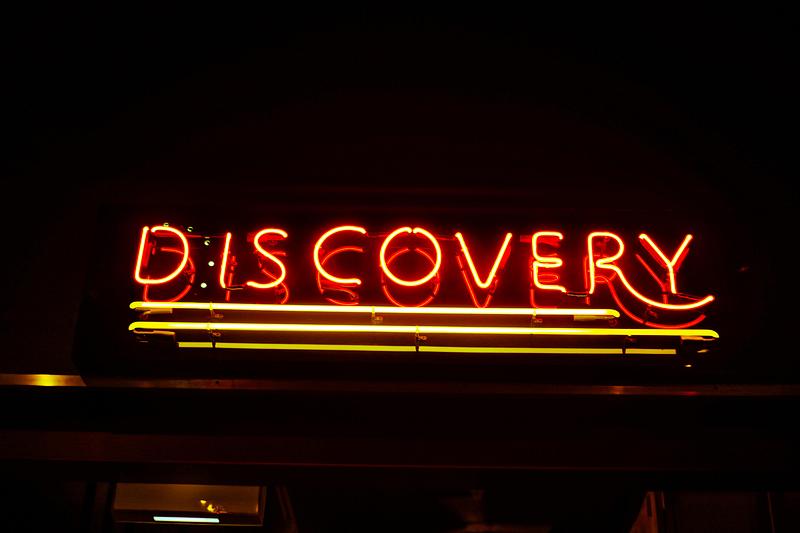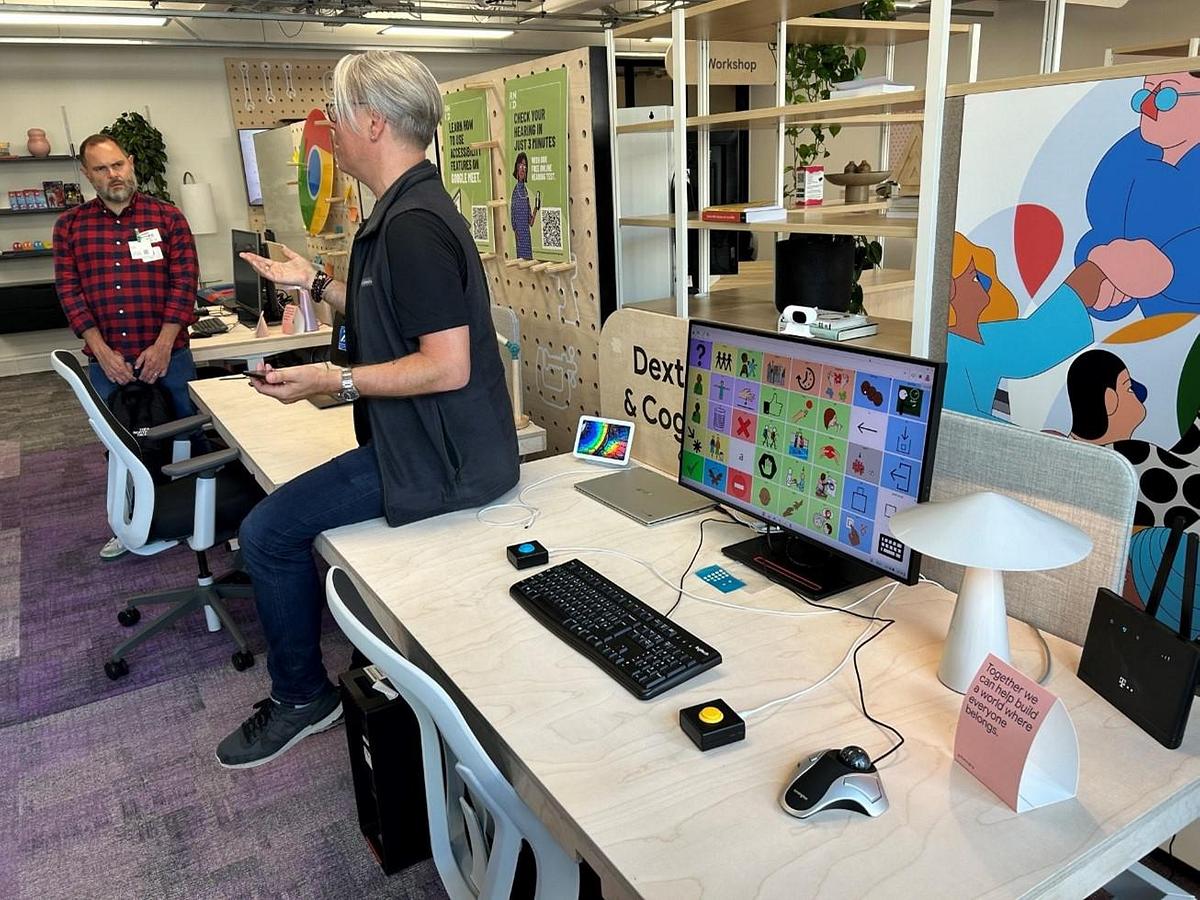A visit to the Google Accessibility Discovery Centre
10 August 2023 - Demelza Feltham

I made a very last-minute decision to hop on a train and head down to London recently. I had been invited by my friend, Heather Hepburn of Sky Scanner, to join the LinkedIn Group Champions Accessibility Network(this will open in a new window) (if you are involved in Accessibility, you can join the network via their LinkedIn), and it just so happened that the next meet up was coupled with a visit to Google’s Accessibility Discovery Centre (ADC)(this will open in a new window). The ADC had been popping up a lot in my LinkedIn of late, and I was keen to check it out.
So, what does the ADC have to do with digital accessibility? Well, to answer that question, I’ll ask another, have you ever considered how someone that is blind may take a selfie? Well, the team at Google did after one of their hackathon events. And have since introduced Guided Frame(this will open in a new window), a feature that provides audible cues to assist in taking a selfie, including notifying the user if they are out of frame, and when it will take the photo. The ADC is full of cool assistive technology like this, and it’s not all Google. The ADC is an important space for collaboration where diverse teams of designers, engineers, product managers and so on, can work together. Technology has an exciting role to play in removing access barriers, and this is a place where you can come together to see how it is happening!
The Accessibility Champions Network exemplified the belief that creating and sustaining accessibility is a collective effort that transcends individual departments. A vibrant mix of professionals from diverse digital backgrounds, numbering around 50 at this particular meet up, congregated at the pub before Google's Head of Accessibility and Disability Inclusion, Christopher Patnoe, ushered us to the ADC. The ADC left no doubt that it had been thoughtfully designed with inclusivity at its core. The space itself was bright and spacious. Showcasing different contributions to the assistive technology space, including three accessible video games and interactive stations and a dedicated UX lab focused on accessibility and disability inclusion, stood as a testament to Google's commitment (this is not an exhaustive list of what the ADC has to offer).

For those new to their accessibility journey, the ADC might have initially seemed daunting. However, Christopher's advice when asked about its place and relation to people and organisations on their accessibility journey, was both encouraging and practical: embrace the beginning, start with the basics like ensuring proper alt text and using semantic HTML.
As an accessibility analyst at User Vision, I love to deliver our results after audits and usability testing but am aware that it can be daunting to receive those reports and presentations. We always emphasise that the road to digital accessibility is an ongoing journey, not a static destination. The visit to the ADC reiterated this sentiment, that when we plan and design with accessibility in mind, innovation does take over.
There was an overwhelming sense of curiosity that infused the ADC, teamed with a sense of wonderment and awe. We were often invited by Christopher to recognise that the assistive technology we were seeing were products of ‘thoughtful design’.
An extension of this thoughtfulness is the independence it affords people, which was reiterated by the ADC. Accessibility barriers can rob people of their autonomy. Accessibility, at its core, is about preserving users' autonomy, a concept I cherish when conducting audits and user research at User Vision. Understanding WCAG documentation, HTML, and ARIA is vital, but the ultimate consideration lies in how users with disabilities can independently use services and sites.

One of the most valuable takeaways from the visit was understanding that mistakes are an inherent part of the accessibility journey. A massive sign showcased at the entrance, designed with accessibility in mind, turned out to be too large for visually impaired visitors. But the ADC didn't shy away from this revelation; instead, they embraced it and adapted, creating a more compact and equally meaningful sign, that now lives next to the original. The lesson resonated deeply – it's not about avoiding mistakes, but about recovering from them and turning them into opportunities for growth.
Trekking down to London for a visit to the ADC was truly worth it, and I recommend others to seek out the opportunity. The centre’s emphasis on thoughtful design and learning by mistakes is palpable. Witnessing the power of collaboration within the Champions Accessibility Network reinforced the collective responsibility of creating inclusive digital experiences.
You might also be interested in...
When Did You Last Update Your Accessibility Statement?
11 December 2025Your accessibility statement says more about your organisation than you think. Learn why keeping it current matters for trust, compliance, and user experience—and what UK, EU, and US regulations expect.
Read the article: When Did You Last Update Your Accessibility Statement?Making Hospitality Welcoming for All: A Digital Accessibility Guide for Hotels
21 November 2025Hotels have long focused on physical accessibility, but true inclusion extends online. This practical guide explains how to make your hotel website accessible for all guests—meeting global WCAG and EAA standards, expanding your reach, and creating a seamless booking experience for every visitor.
Read the article: Making Hospitality Welcoming for All: A Digital Accessibility Guide for Hotels3 perspectives on how AI is shaping inclusive digital experiences
10 November 2025AI is transforming digital accessibility — empowering disabled users, enhancing how we evaluate digital experiences, and reshaping how inclusive products are designed. This article explores three key perspectives and highlights how AI can support more equitable, human-centred digital experiences when used thoughtfully and collaboratively.
Read the article: 3 perspectives on how AI is shaping inclusive digital experiences